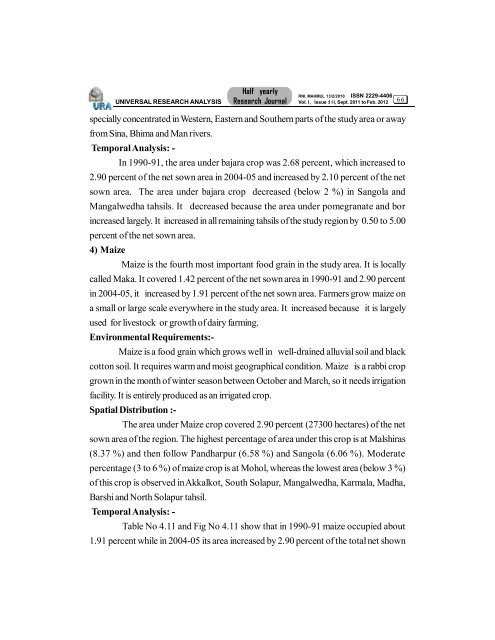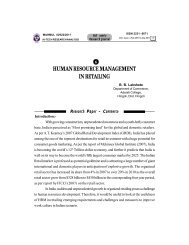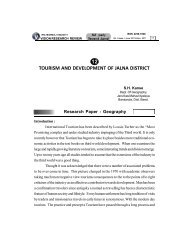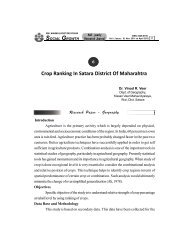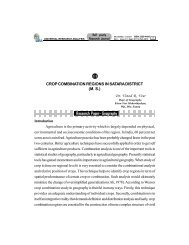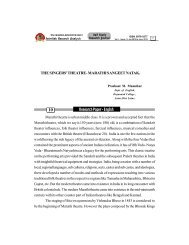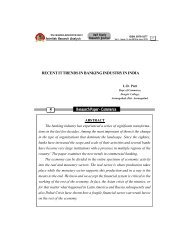A Geographical Study Of Food Grain Cropping Pattern
A Geographical Study Of Food Grain Cropping Pattern
A Geographical Study Of Food Grain Cropping Pattern
You also want an ePaper? Increase the reach of your titles
YUMPU automatically turns print PDFs into web optimized ePapers that Google loves.
UNIVERSAL RESEARCH ANALYSIS<br />
Half yearly<br />
Research Journal<br />
RNI. MAHMUL 13/2/2010 ISSN 2229-4406<br />
Vol. I , Issue :I I I, Sept. 2011 to Feb. 2012<br />
specially concentrated in Western, Eastern and Southern parts of the study area or away<br />
from Sina, Bhima and Man rivers.<br />
Temporal Analysis: -<br />
In 1990-91, the area under bajara crop was 2.68 percent, which increased to<br />
2.90 percent of the net sown area in 2004-05 and increased by 2.10 percent of the net<br />
sown area. The area under bajara crop decreased (below 2 %) in Sangola and<br />
Mangalwedha tahsils. It decreased because the area under pomegranate and bor<br />
increased largely. It increased in all remaining tahsils of the study region by 0.50 to 5.00<br />
percent of the net sown area.<br />
4) Maize<br />
Maize is the fourth most important food grain in the study area. It is locally<br />
called Maka. It covered 1.42 percent of the net sown area in 1990-91 and 2.90 percent<br />
in 2004-05, it increased by 1.91 percent of the net sown area. Farmers grow maize on<br />
a small or large scale everywhere in the study area. It increased because it is largely<br />
used for livestock or growth of dairy farming.<br />
Environmental Requirements:-<br />
Maize is a food grain which grows well in well-drained alluvial soil and black<br />
cotton soil. It requires warm and moist geographical condition. Maize is a rabbi crop<br />
grown in the month of winter season between October and March, so it needs irrigation<br />
facility. It is entirely produced as an irrigated crop.<br />
Spatial Distribution :-<br />
The area under Maize crop covered 2.90 percent (27300 hectares) of the net<br />
sown area of the region. The highest percentage of area under this crop is at Malshiras<br />
(8.37 %) and then follow Pandharpur (6.58 %) and Sangola (6.06 %). Moderate<br />
percentage (3 to 6 %) of maize crop is at Mohol, whereas the lowest area (below 3 %)<br />
of this crop is observed in Akkalkot, South Solapur, Mangalwedha, Karmala, Madha,<br />
Barshi and North Solapur tahsil.<br />
Temporal Analysis: -<br />
Table No 4.11 and Fig No 4.11 show that in 1990-91 maize occupied about<br />
1.91 percent while in 2004-05 its area increased by 2.90 percent of the total net shown<br />
6 6


